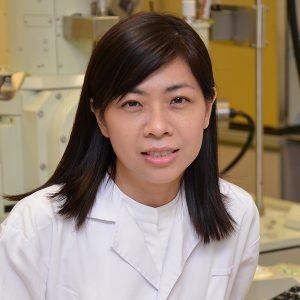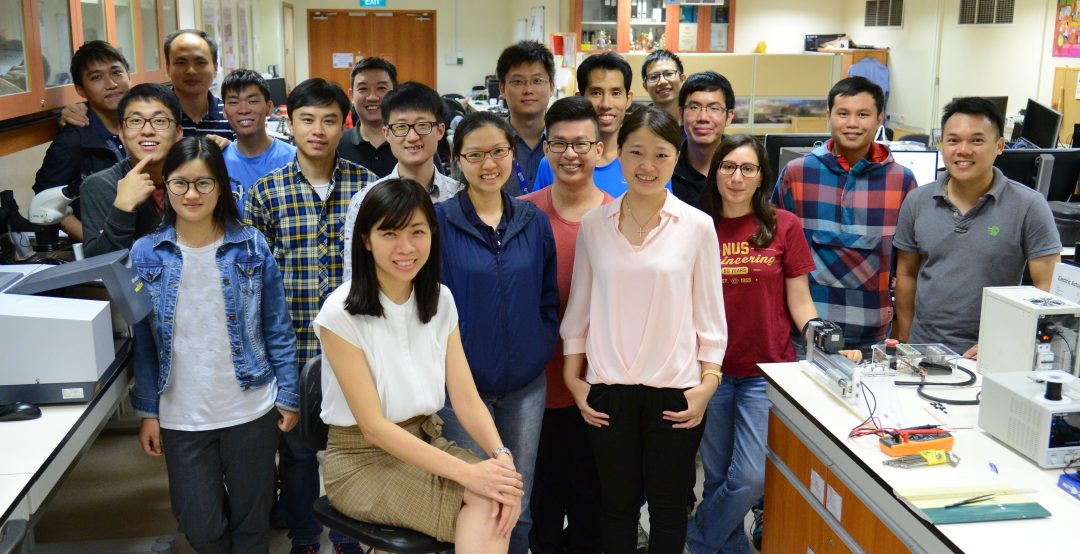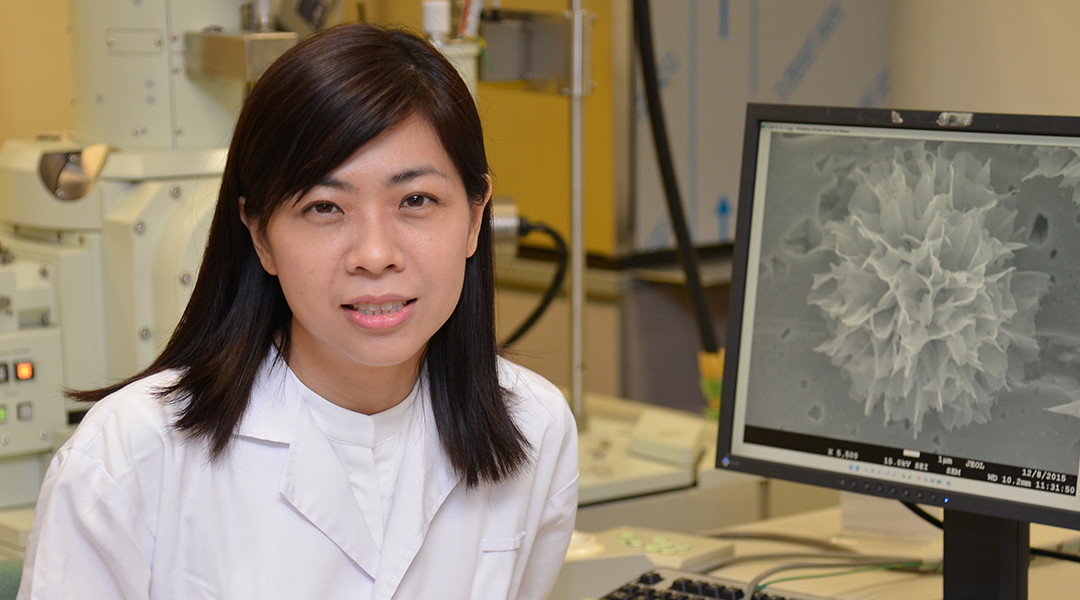Dr. Ghim Wei Ho is an Associate Professor of the Department of Electrical and Computer Engineering at the National University of Singapore (NUS). She is also one of the pioneer faculty of the Engineering Science Programme (ESP) at NUS. Her research interest lies in the photon and thermal energy conversion of functional nanomaterials for energy and environmental sustainability and has co-authored more than 150 papers in refereed journals.
 Dr. Ho graduated with a BSc and MSc from the National University of Singapore in 2000, and worked as an Engineer at Chartered Semiconductor Manufacturing (CSM), Singapore from 2000–2002, before embarking her PhD at the University of Cambridge. She was elected a Scholar at Selwyn College, University of Cambridge in 2003. Upon completion of her PhD in 2006, she worked as a postdoctoral researcher at University of Cambridge and subsequently joined NUS. In 2014, she was awarded the L’OREAL UNESCO for Women in Science Fellowship. In 2015, she was the Honoree Winner in JCI’s Ten Outstanding Young Persons (TOYP) Award in the Science and/or Technological Development category. In 2016, she was honored as the Science & Technology winner for the Great Women of Our Time 2016.
Dr. Ho graduated with a BSc and MSc from the National University of Singapore in 2000, and worked as an Engineer at Chartered Semiconductor Manufacturing (CSM), Singapore from 2000–2002, before embarking her PhD at the University of Cambridge. She was elected a Scholar at Selwyn College, University of Cambridge in 2003. Upon completion of her PhD in 2006, she worked as a postdoctoral researcher at University of Cambridge and subsequently joined NUS. In 2014, she was awarded the L’OREAL UNESCO for Women in Science Fellowship. In 2015, she was the Honoree Winner in JCI’s Ten Outstanding Young Persons (TOYP) Award in the Science and/or Technological Development category. In 2016, she was honored as the Science & Technology winner for the Great Women of Our Time 2016.
In this interview, Dr. Ho shared her research experience, working style, thoughts about the world, with us. We hope it will provide some insights for the young researchers.
Could you briefly introduce your research?
I have always being intrigued by solar technologies which have exciting and vastly untapped optical-heat manifestations. This explains my research interest lies in the photon and thermal energy conversion of functional nanomaterials for energy and environmental sustainability – solar driven desalination-purification, energy generation, photo/photoelectro-catalysis hydrogen generation etc. No doubt, solar energy has surged past many other alternative power sources to become one of the most important renewable energy technology choices. Hence, I emphasize on the unique proposition of renewable solar irradiance for simultaneous energy conservation and energy generation capabilities. Such relatively unexplored multi-variant energy conservation coupled energy generation undertakings reinforce efforts in sustainable energy and ecosystem preservation. A few novel nanocomposites have been developed that offer unprecedented parallel capabilities of distillate production, clean fuel generation, pyro/thermoelectricity, pollutants degradation and self-regulated actuation. These low-cost solution processable nanocomposites that possess several functionalities form the basis of new generation soft and flexible materials with enhanced performance. My optimistic dream is to eventually bring about affordable and viable solutions to the remote region and to meet increasing demand for integrated sustainable energy-environment-water technologies.
How did you start your career as a scientist? What is the most attractive thing as a scientist? Why did you choose this research field at the beginning?
My dad is an Engineer, Structural Engineer. In the early days, he brought me to his construction sites and talked to us about his projects and wonders of Science and Engineering. He definitely influences me in my thinking though he never tells me what I should study or which career path to choose – it is simply his enthusiasm for Science, Engineering and technology that made me love it too.
During my Master, I was strongly encouraged and supported by my supervisor, Prof. Andrew Wee to do further studies. That is when I renewed my passion for Science when I found myself successfully synthesizing (back then) the hottest and most intriguing nanomaterial i.e. carbon nanotubes. I became excited about doing more research in the field of materials science and drawn to further my research in technological works that have practical and functional applications especially in finding renewable alternatives to power, provide and clean the future. This keeps me going as I know that I am seeking useful solutions towards sustainable energy provision and ecosystem preservation which one the most important humanity issues that is to be tackled for the benefit of society.
What kind of impact would you expect from your research work? How do you envision the development of the soft matter field?
Through my innovation and impact in both education and research in nanomaterial science and engineering, I hope to contribute to advances in energy and environmental benefits and bring about greater recognition of the under-represented women in this field. I envision development of soft matter in new approaches to power and provide the future by enabling cleaner, safer and renewable energy without creating additional carbon in the atmosphere is one, if not simply the most important, problem facing humanity today.
Which piece of work are you most proud of? Which piece of work is your favorite? One of the developed multifunctional nanocomposite is a broadband solar thermal collector nanocomposite endowed with integrated photocatalytic and plasmonics–photothermic properties for highly efficient catalysis-desalination of seawater. A common prerequisite for both desalination and catalysis technology is the heat input as these processes are typically endothermic. Currently, bulk heating of large thermal masses limits the reactions efficiency and affordability of desalination/catalysis process. Hence, we have purposefully minimized thermal mass and tactfully target interfacial surface reactions towards consequential and energy-saving seawater catalysis-desalination. Having solar thermal nanocomposites directly dispersed in seawater leads to instantaneous initiation of chemical reactions and steam generation based on plasmonic-photothermic effect. The localized photoheating allows fine control of site/magnitude/span of heat generation in contrast to uncontrollable and energy intensive bulk heating. We have shown seawater seeded with solar thermal collector nanocomposites to efficiently produce steam-distillate well below its boiling point and concurrently, the nanocomposite remarkably enhances catalytic clean hydrogen production largely in visible-near infrared spectrum.
What is your hobby? What would you like to work on if not science?
Gardening is my hobby. It brings me in touch with the astounding God’s creation, flowers, vegetables, and creepy crawlies. I derive great pleasure and satisfaction from gardening when my flowers, herbs and plants are blooming and fruiting. I associate gardening not only as a recreation but also a therapeutic environment to relax, destress and be in awe of nature. I also get my kids involve in the planting and harvesting, which is a perfect outdoor activity for family bonding and also for them to learn appreciate nature landscape, colors, textures etc. If not science, I would probably be a garden farmer or landscaper to design functional, beautiful and relaxing gardens or outdoor spaces for my clients.
How do you balance between work and life?
I try to be highly organized by having planning done ahead of time and to-do lists manage and track with stipulated deadlines. I aim to stay focus and clear whatever deadlines and milestones I set for myself. Having a good time management is another way I try to take control of my time and spend them wisely. When I feel more in control of time, I tend not to feel overwhelm by excessive workloads. I also establish some clear work-life boundaries so as to reduce the potential of time conflicts and the stresses that come along with them. Most importantly, I derive happiness and joy both my research work and family life, hence things become much easier to keep them in balance.
What do you think is the most important characteristics for a researcher? Could you give some suggestions to the graduate students or junior researchers?
Be yourself, follow your dream and not be put down by people, failures along the way. Also, be absolutely passionate, focus and ambitious in your endeavors by not setting a limit for yourself so that you can accomplish greater things than you can ever imagine. Remember that success is walking from failure to failure with great tenacity that will eventually lead you to your destination.
Which scientist do you admire most? Why?
Science and technology are gender bias and often considered the forte of men. Hence, I really admire the contribution of women especially those days when women are lowly regarded and for the most part of the world, they are precluded from tertiary education and important roles. Also, they face persistent and multitude barriers before they are being accepted in male-dominated scientific communities. One of the women scientists that I admire is Marie Curie where her early researches were often performed under challenging and deprived circumstances. She was the first woman to receive a Nobel Prize in Physics 1903 and then became a double Nobel Prize recipient in 1911 (Chemistry), on radiation. She was quiet yet dignified and was held in great esteem and admiration by all scientists.

What do you think is the key to a happy lab life?
To me, good lab practices and communications are probably the key to a happy lab life. As the principal investigator of the lab, I try to establish a collaborative and interactive work environment with clear goals/visions by not just having regular research group meeting, but also operations (ops) meeting, informal chat/discussions and touch base one-on-one to sort out any personal, research or lab issues in a timely manner. I do see effective and openness in communication being imperative to the success of individual researcher and my overall research team. As the team is constantly being engaged, they will develop a close, comfortable relationship and a mutual sense of respect to be able to voice their ideas and be listened to, and committed to fulfill full potential and productivity. I also understand that every researcher is different hence I give them a certain extent of flexibility to work to the best of their abilities in their own ways without trying to micromanage them.

















